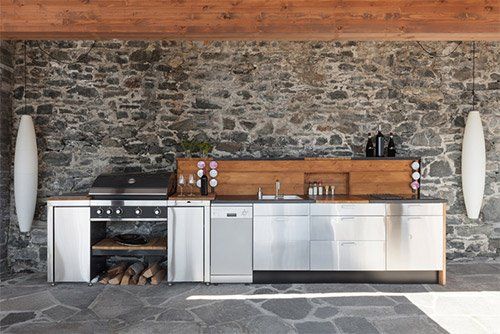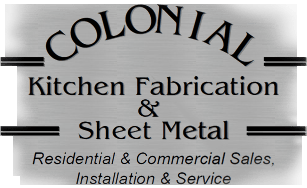3 Tips for Designing an Outdoor Kitchen
- By Admin
- •
- 01 Oct, 2018

Home cooking is both rewarding and comforting. But kitchens generate a lot of heat, which taxes air conditioners in summer months and contributes to higher energy bills. Many homeowners in South Carolina and other heat-prone parts of the country avoid this problem by installing outdoor kitchens.
Outdoor kitchens allow you to avoid the heat, smoke, and other drawbacks of indoor kitchens. But to get the most from your investment, you must plan carefully before installing the kitchen. If you dream of an outdoor kitchen, take a closer look at three key tips for designing an attractive and functional outdoor kitchen.
1. Include a Refrigerator
Heat-producing appliances like stovetops and ovens form the core of an outdoor kitchen. But most people often find refrigerators to be convenient as well. A fridge allows you to keep things like perishable ingredients and salads close at hand, saving you the trouble of running in and out of the house.
Outdoor refrigerators differ from indoor units in a number of ways. First, manufacturers build outdoor fridges to withstand temperature ranges far beyond those of indoor fridges. Second, outdoor refrigerators require extra weatherproofing to protect electrical components from water-related corrosion.
When selecting an outdoor refrigerator, look for a model made from the highest grade of stainless steel. While such steel usually carries a higher price tag, it is much more resistant to rust.
If you decide to build your refrigerator into an outdoor island, be sure to select a built-in unit. These refrigerators locate their vents on the front, as opposed to free-standing units which vent heat from the back. Freestanding fridges in built-in islands often overheat since the vents don't have the space they need to release heat.
2. Choose Your Location Wisely
Location can make or break an outdoor kitchen. Choose poorly and you may find yourself dealing with all sorts of unpleasant things. For instance, if the kitchen is too far from the house, you’ll have to make the long journey each time you need to run inside for more supplies.
Ideally, you should situate your outdoor kitchen as close as possible to your house. Orient smoke-producing grills and ranges so that they will blow away from your home. To do this, you must first research prevailing wind conditions in your area. Locate outdoor dining areas upwind from your grill to keep diners from getting blasted with smoke during dinner.
Many outdoor kitchens contain countertops used not only for food prep, but also for informal dining. Consider the views that guests will have when sitting at your counter. Try to place your counter in a way that minimizes unattractive sightlines for guests while still allowing a useful range of vision for those doing the cooking.
3. Roof Your Kitchen
Rain can render even the most beautiful outdoor kitchen nonfunctional if you don't put a roof over it. If your kitchen is exposed to the elements, materials will wear more quickly. No matter how well your kitchen itself has been waterproofed, eventually that rain finds a way to get where it shouldn't. Rust, rot, and mold growth may all ensue.
Fortunately, homeowners have many different options when it comes to covering an outdoor kitchen. Those who like an open, airy feeling often choose to install pergolas. Traditionally, pergolas had an open, lattice-like structure used to train vines. Today many homeowners choose to add canvas or fiberglass covers to provide better waterproofing.
Those on a tighter budget can still protect their outdoor kitchen using a shade sail. Constructed of sturdy, waterproof fabric, these sails attach to the tops of anchor poles installed in your yard.
Those with no budget constraints should consider adding screens around their outdoor kitchen or installing an independent roofing structure above it.
For more information about designing the best outdoor kitchen for your home, please contact the pros at Colonial Kitchen Fabrication & Sheet Metal.








